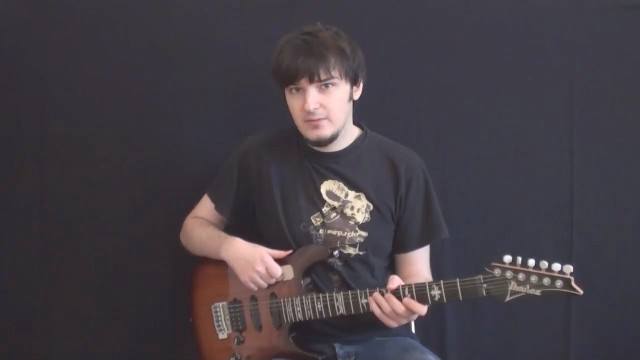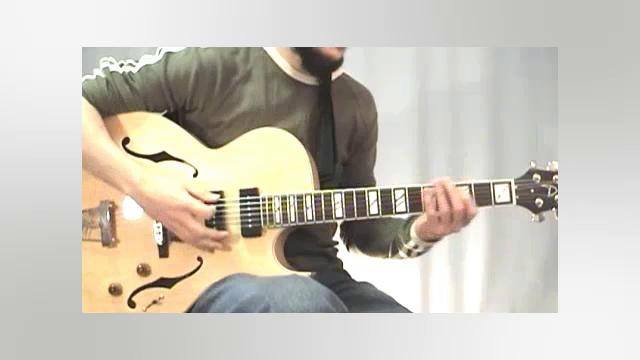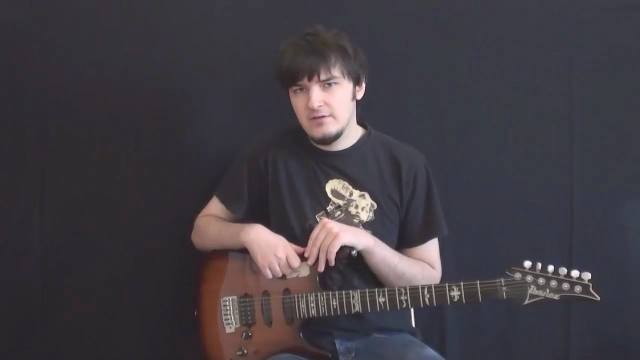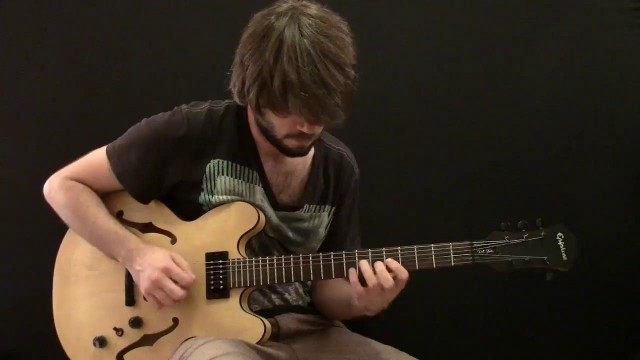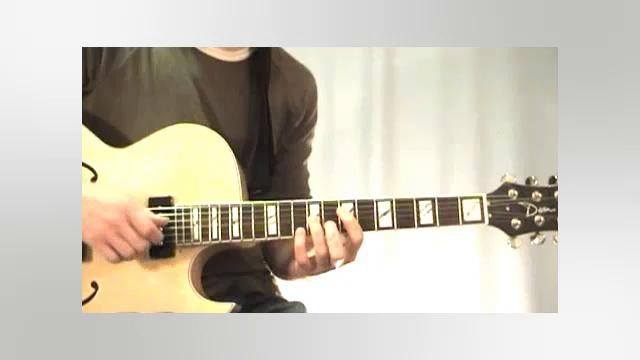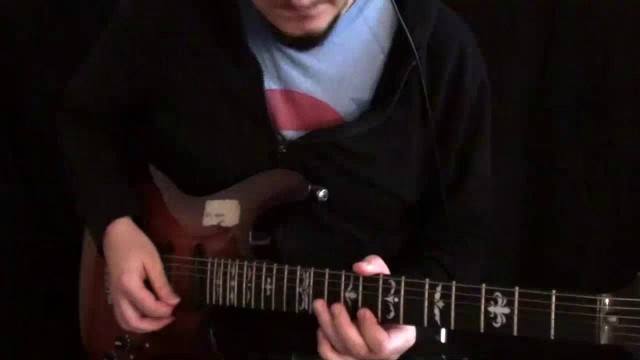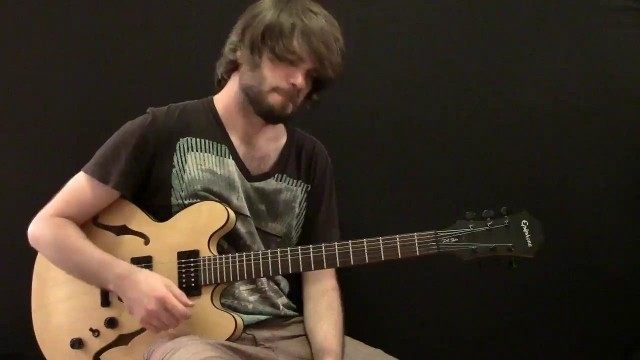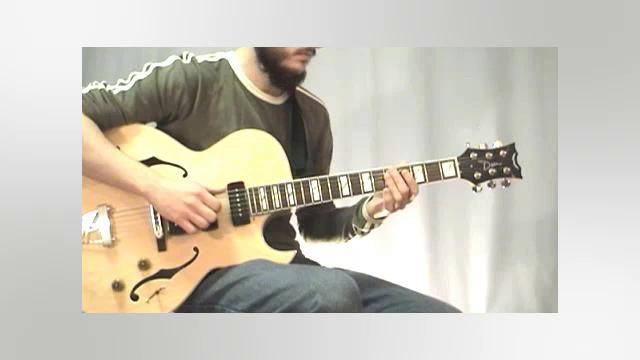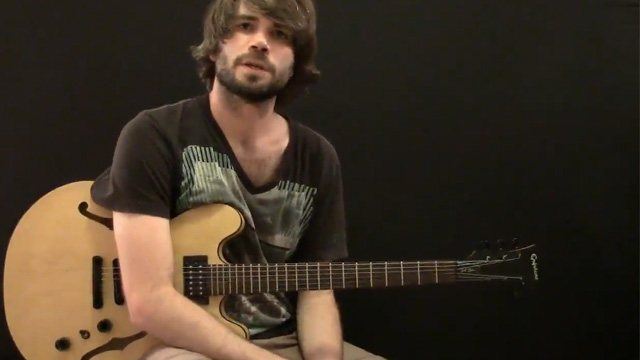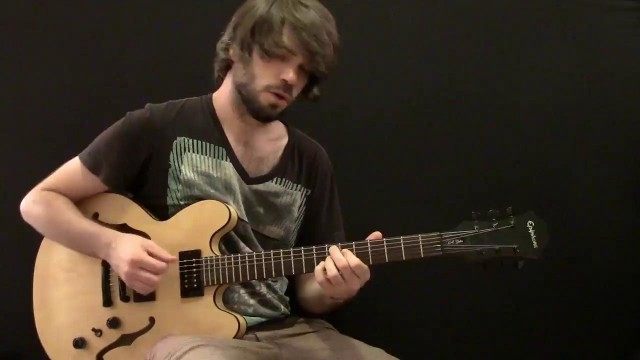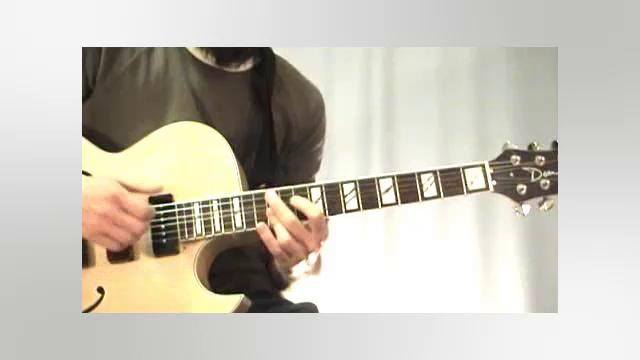Guide Lines part 3
Before you do anything with this lesson, I want you to just listen to the first half of the video. It is a 16 bar phrase over our II-V-I progression. The chords progression is simply repeated as such, Am7 D7 Gmaj7 Gmaj7 Am7 D7 Gmaj7 Gmaj7 .
I want you to actually listen and see if you can hear the chord changes within the melody. There are a few different approaches to using Guide and Chord Tone movements involved. You should by now be able to recognize that I'm playing over a II-V-I progression though.
The Analysis
We start with a few clusters of notes which I will call "Cluster" 1 2 3 & 4.
Cluster 1
Starting with a B note on an off beat, then landing on a C note which runs up a C major arpeggio in triplet form. We end this bar on G (the 7th of Am7) as the next bar begins we drop down to the F#. This gives us our typical 7th to 3rd guide tone movement from Am7 to D7.
Cluster 2
These notes are not outlining any changes in the chord. We are just playing a short part of the phrase over a static Gmaj7 chord. The use of the major 3rd, the B note, keeps us grounded to this chord.
Cluster 3
Starting at the end of bar 4 and continuing into bar 5. We want to outline the transition from Gmaj7 to Am7 now. The line ends bar 4 descending with D and B notes (5th and 3rd) moving up to a C (the 3rd of Am7). A relatively strong transition. However not as strong as the 3rd to 7th option. The line continues over the Am7 chord in an arpeggio type of run.
Cluster 4
Finally bar 6 to 7 outlines the movement from D7 to Gmaj7. bar 6 ends on F F# A (minor7 major7th 5th) the use of the minor 7 interval (F natural) comes from the bebop scale which is a common tool to add chromaticism over dominant chord's.
This transition is a bit different. You will see the red line indicating from one F# to another. In between is the A note and a G.
What's happening here is the Guide Tone is staying as an F# between both chords, since this note is strong in both chords. We have used it as a kind of target note and moved away from it then come back. All the while using other strong tones from each chord. Such as the A for D7 and the G for Gmaj7, which is obviously the root note.
The Last 8
From bar 9 we have a pentatonic looking run. You should be getting the idea now so I won't talk much about this one.
Bar 9 to 10 (Am7 to D7) = 5th to 7th movement.
Bar 10 to 11 (D7 to Gmaj7)= 5th to 3rd movement.
from bar 12 onward we have yet another example of Motif Development
Bar 12 to 13 (Gmaj7 to Am7)= 7th to 3rd movement.
Bar 13 ends on a D (the 11th of Am7), which doesn't create such a smooth transition to the next chord. So Bar 14 begins fresh with the 3rd of D7, drawing a picture of D7.
Once again, bar 14 ends with some tension on the 9th. So we start bar 15 (Gmaj7) on the Root. This is also a nice way to end this part of the phrase and conclude the entire 16 bar passage. Playfully ascending the G major scale and ending again on the Root note.
The next lesson will be a bit of an exercise to warm your hands up and introduce you to more variations on playing through this progression with arpeggios.
Before you do that though. Take some time to improvise and try and put some of these new ideas to use.









